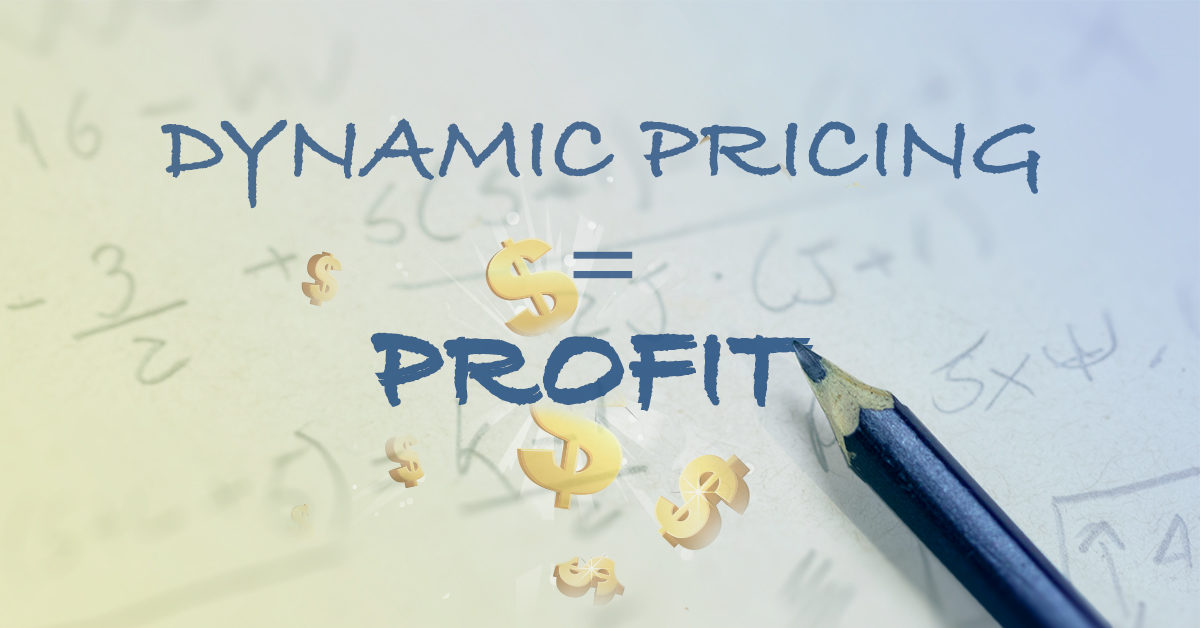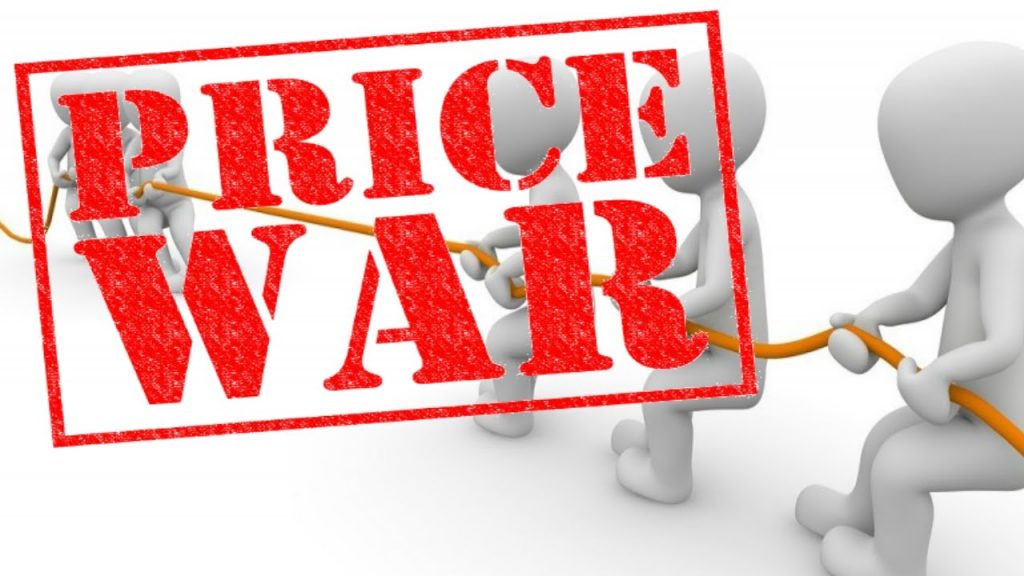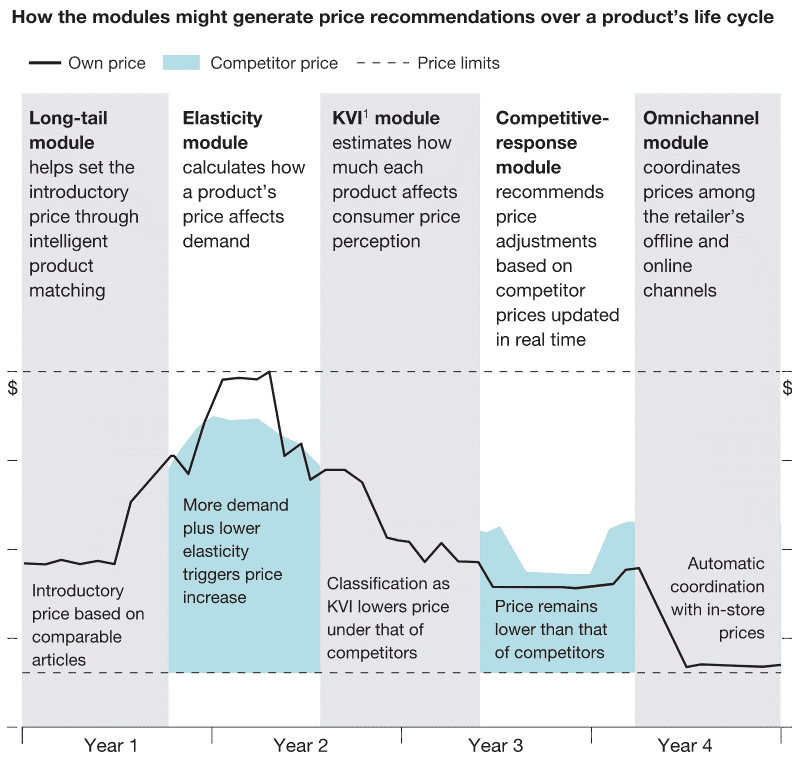Toggle navigation

How often do you shop online? If you are a frequent shopper, you might have noticed that the prices of many of your favorite products fluctuate with time of the day and sometimes even with the weather.
This practice of offering goods at different prices or dynamic pricing has become commonplace in e-commerce today. While Amazon is hailed as the leader and pioneer in e-commerce dynamic pricing space, other players are slowly catching up.
Dynamic pricing has allowed the likes of Amazon to maximize their profit margins by up to 25%.
So, what is dynamic pricing all about, how does it work and how has Amazon dynamic pricing helped the e-commerce giant achieve the undisputed market leader it is today?
We will cover all this and more in our blog. So, let’s begin.

Dynamic pricing is a pricing strategy wherein the prices of products are changed in response to real-time changes in demand and supply. Different factors come into play in a dynamic pricing model: demand, supply, prices of competitors, prices of subsidiary products, etc. Prices can even change from one customer to another depending on their purchasing habits.
Dynamic pricing helps e-commerce players like Amazon and Walmart adopt a flexible and personalized approach in pricing products while letting them stay competitive.
How does Dynamic Pricing Benefit E-commerce players?

Dynamic pricing lets an e-commerce player maximize profits for each customer. Now, let’s say they have a product for which the initial demand is low. If they want to finish the stock for this product, they can lower the product price and trigger demand for the product. This way, they can earn additional revenue on a product.
On the contrary, if the demand for a product shoots up during a season, say sunscreen during summers, they can raise the price and sell the product at higher margins without affecting sales volume.
Not all products of any e-retailer sell equally well. There are times when they need to clear their inventory. Common examples include stock of woolen clothing during spring and stock of swimwear during autumn. Such products can neither be sold at original prices (because no one would buy them at those prices) nor at very low prices.
With dynamic pricing models, e-retailers can analyze inventory levels, market trends and competitor prices to optimally price any such product.
Prices in e-commerce move fast. More often than not, customers check multiple websites before making a purchase. If you don’t offer the best price, chances are your competition will beat you on many prices. With dynamic pricing, retailers can stay acquainted with competitor prices and other pricing trends and automatically incorporate these into new pricing.

Dynamic pricing models allow you to calculate the demand curve for each customer. This curve indicates the minimum and maximum price a user is willing to pay for a specific product. Several data points go into making a demand curve. With so much information at their fingertips, sellers can study consumer behavior closely and price their product accordingly.
Dynamic pricing, however, poses certain risks that e-retailers need to beware of:

Customers don’t like when they pay a higher price than other people for the same product or service. Such a pricing strategy can leave customers dissatisfied, resulting in unsavory reviews or complaints. Some of them may even ask for a refund.
Regular shoppers may get offended when they come to know that the seller is giving discounts to infrequent shoppers who take their time before checking out.

Dynamic pricing can lead to a situation where one e-retailer drops the price of a product, which causes its competitor to lower it further. This process continues until these businesses reach a point where they cannot sustain themselves at the artificially reduced price.
For this reason, many retailers look at dynamic pricing with skepticism.
Now that we have discussed the pros and cons of dynamic pricing, let us elaborate on how the entire thing works.
Dynamic prices are determined using self-improving machine learning algorithms that take into consideration a wide array of factors to determine the best price for a specific customer at a specific point of time.
Out of the many different variables that are using to decide the price, the major ones include:
Because dynamic pricing is inherently complex, different modules can be used over different stages of the life cycle of any product (see chart below). These modules include:
Long-Tail Module: This module allows an e-retailer to set the introductory price for a product with little or no historical data. The module uses attributes to match such products with those having rich historical data.
Elasticity Module: This module uses a range of factors including seasonality, cannibalization, and competitive moves to determine how the price of a product affects demand.
Key-Value Items (KVI) Module: Key-value items are popular products whose prices consumers tend to remember more than other products (grocery items for instance).
KVI module determines how much each product impacts user price perception by taking into account actual user data. The module ensures that the products strongly impacting users’ price perception are appropriately priced.
Competitive-Response Module: This module takes into account real-time pricing data from competitors and accordingly suggests adjustments to the product price.
Omni-Channel Module: This module co-ordinates prices between the offline and online channels of a retailer.
 Image Courtesy: McKinsey & Company
Image Courtesy: McKinsey & Company
Though an ideal pricing solution should include all five modules, e-retailers can begin with just the KVI and competitive-response module to optimally price their products and then introduce the remaining modules over time.

Dynamic pricing, once heard of in the airline and hotel industry, is now gaining a foothold in the e-commerce space. Retail behemoth Amazon has been considered a pioneer of sorts in e-commerce dynamic pricing.
If statistics are to be believed, Amazon changes its product prices 2.5 million times daily which means the price of a product changes every 10 minutes on an average. This is 50 times more than Walmart!
This frequency of price changes sometimes irks customers who see a drop in price right after they have made a purchase. But this strategy has helped the e-retailer stay competitive and bolster its earnings on a year-on-year basis (see chart below).
The price-tracking website Camelcamelcamel.com checks prices of some of Amazon’s products 3 to 4 times a day. Camelcamelcamel’s founder Daniel Green says,
“We wish we could do hourly price checks, but we’re monitoring 50 million products. This is the best we can do.”
Amazon sells some of its products at a loss. In such cases, the loss is covered through cross-selling, up-selling or enticing new customers with below-average prices.
These newly-converted customers may not purchase a profitable product right away but keep on making repeat purchases and become loyal customers in due course, all thanks to the user experience they enjoy on Amazon.
Amazon dynamic pricing has become a competitive tool: the retailer beats its competitors on popular products while raising the price of uncommon, less-frequently purchased products. So, when customers compare the prices of common items, they find them to be the cheapest on Amazon and form the perception that Amazon has the best prices overall.
Such customers start purchasing frequently from Amazon and end up paying high prices for other items they purchase during their customer journey.
In today’s fiercely competitive online marketplace when customers can check the prices of any and every product out there, an effective pricing strategy is a must for any online retailer.
Advances in technology and availability of data storage and processing techniques have allowed the likes of Amazon and Walmart to respond to the ever-changing dynamics of demand and supply and price their products optimally, all while keeping their customers satisfied. So, dynamic pricing is here to stay and expected to get more mainstream in the days to come.
Need more such articles? Please let us know in the comment section below. Thanks for reading.